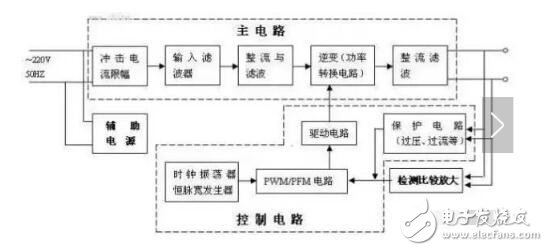
Privacy statement: Your privacy is very important to Us. Our company promises not to disclose your personal information to any external company with out your explicit permission.
Car chargers are an essential component of new energy vehicles, and their market size has expanded with the rapid growth of the new energy vehicle market. In 2016, the market size of electric vehicle on-board chargers is about 2 billion yuan. In the next few years, with the increase in the output of new energy vehicles, it is estimated that by 2020, the domestic market of electric vehicle on-board chargers will reach 7.7 billion yuan.
Compared with traditional cars, new energy vehicles have three core components: “battery” assembly: battery and battery management system; “motor” assembly: motor and motor controller.
High-voltage "electric control" assembly: including on-board DC/DC converter, on-board charger, electric air conditioner, PTC, high-voltage power distribution box and other high-voltage components. The main components are on-board DC/DC converters and on-board chargers.
Figure 1 Schematic diagram of the structure of the new energy vehicle system
Car charger parameters:
1. Input voltage: AC220V±10% 50-60Hz
2. Output voltage: 48V, 72V, 144V, 200-420V, 500-650V
3, output current: 30A, 25A, 20A, 10A, 50A
4. Output power: 1.8kW 1.8kW 3kW 3.3kW 30KW
4, output ripple: ≤ 1% (full load)
5, voltage, current stability accuracy: ≤ 1%
6, harmonic: ≤ 5%
7. Working efficiency: ≥95%
8, working status: can maintain long-term work and single charge
9, protection function: over voltage, over current, overheat, short circuit, reverse connection protection
10, low voltage auxiliary power supply: DC13.5V/100W regulated power supply
11, CAN communication interface:
12, safety indicators: insulation resistance ≥ 200MΩ pressure 1500V / min
13, power factor: 0.99 (active power factor correction APFC)
14, size: electricity
Features
(1) It has the function of high-speed CAN network and BMS communication to judge whether the battery connection status is correct; obtain the battery system parameters, and the real-time data of the whole group and single battery before charging and during charging.
(2) It can communicate with the vehicle monitoring system through the high-speed CAN network, upload the working status, working parameters and fault alarm information of the charger, and accept the start charging or stop charging control commands.
(3) Complete safety protection measures:
1. AC input overvoltage protection function.
2. AC input undervoltage alarm function.
3. AC input overcurrent protection function.
4. DC output overcurrent protection.
5, DC output short circuit protection.
6. Output soft start function to prevent current surge.
7. During the charging process, the charger can ensure that the temperature, charging voltage and current of the power battery do not exceed the allowable value; and has a single battery voltage limiting function, which automatically adjusts the charging current according to the battery information of the BMS.
8. Automatically judge whether the charging connector and charging cable are properly connected. When the charger is properly connected to the charging post and the battery, the charger can start the charging process; when the charger detects that the charging pile or battery is not connected properly, the charging is stopped immediately.
9. The charging interlock function ensures that the vehicle cannot be started before the charger is connected to the power battery.
10, high-voltage interlock function, when there is a high voltage that is harmful to personal safety, the module locks no output.
11, with a flame retardant function.
As a power electronic system, the car charger is mainly composed of a power circuit and a control circuit.
For power circuits, a DC/DC converter consisting of a transformer and a power tube is an important part of it.
For the control circuit, its core is the controller, which is used to realize CAN communication with the BMS, and controls the power circuit to charge the lithium battery pack according to the three-stage charging curve.
When the car charger is connected to the AC, it does not immediately output the energy to the battery. Instead, the BMS battery management system first collects and analyzes the state of the battery, and then adjusts the charging parameters of the charger.
The car charger has two major parts, the power supply part (main circuit) and the charger control board.
The charger controls the main board to control, monitor, measure, calculate, correct, protect, and communicate with the external network. It is the "central brain" of the car charger.
The main function of the power supply part is to convert 220 VAC to 300 VDC. The power part is divided into two parts: PFC and LLC. In fact, we can regard PFC as AC/DC and LLC as DC/DC. .
Figure 3 Car charger working principle diagram

Don't know how to choose car charger? Come and contact us. Waweis would not let you down.
September 29, 2024
July 11, 2024
July 03, 2023
July 03, 2023
July 03, 2023
July 03, 2023
May 23, 2020
この仕入先にメール
September 29, 2024
July 11, 2024
July 03, 2023
July 03, 2023
July 03, 2023
July 03, 2023
May 23, 2020

Privacy statement: Your privacy is very important to Us. Our company promises not to disclose your personal information to any external company with out your explicit permission.

Fill in more information so that we can get in touch with you faster
Privacy statement: Your privacy is very important to Us. Our company promises not to disclose your personal information to any external company with out your explicit permission.